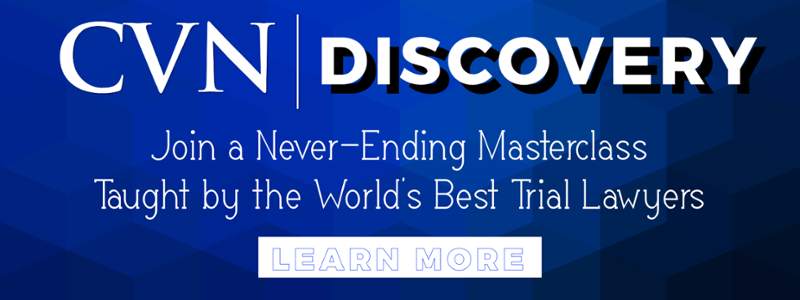
Stock image.
While trial is first and foremost about telling your client’s story, weaving anecdotes from your own life into closings, where allowed, adds a different perspective to your case that can resonate powerfully with jurors.
Watch the ways these attorneys drew from their own life stories to strengthen their closings and set up major verdicts.
Themes
A personal anecdote can be a strong anchor for your closing theme.
In closings of a wrongful death trial against a facility for people with developmental disabilities, Fried Goldberg's Michael Goldberg explained the full extent of responsibility by telling jurors what happened when his mother caught him taking a piece of candy from a store as a child.
The anecdote introduced a theme that set up a $2 million verdict in the case, with the facility found 70 percent responsible.
Explaining Points of Law
Stories from your life can paint a memorable picture of otherwise dry legal terminology. They're particularly useful when you want to ensure jurors understand a legal point crucial to your case.
At trial against two doctors over the cancer death of a Georgia man, Huff Powell Bailey’s Dan Huff told the story of how he figured out which of his two children ate some freshly baked cupcakes.
The story was a colorful way to explain direct and circumstantial evidence, which was a key point in the trial, and jurors cleared both doctors of liability.
In an in-depth interview on the trial, which also featured Huff's partner, Scott Bailey, Huff said stories like that also show jurors a more complete picture of you, which can strengthen connection and credibility.
"I just think it helps the jury recognize that lawyers are just regular people, too. We all have lives and bring to [trial] our own personalities, as well."
Telling the Damages Story
Drawing from your own experience can be particularly powerful in complementing your client's damages story and explaining how to value non-economic loss.
At trial against Fiat Chrysler over the fuel tank explosion that killed four-year-old Remington Walden, The Butler Law Firm’s Jeb Butler explained the full value of life by using a pair of aviator sunglasses his 90-year-old-grandfather, a World War II pilot, had given him.
Jurors awarded $150 million total in the case.
During a webinar discussing the trial, Greene Broillet & Wheeler LLP's Chris Spagnoli said the anecdote drove home the magnitude of the toddler’s loss.
“What’s so important and what you were able to do is give the picture of the longevity that this child was deprived of,” Spagnoli said.
And at trial over the traumatic brain injury that cost a teenager his senses of taste and smell, among other issues, Fried Goldberg’s Brad Thomas argued the magnitude of that loss by telling jurors of the scents that immediately reminded him of time spent with his father and grandfather. This, Thomas argued, was a way to remember that his client would no longer have.
The jury handed down a $5 million verdict in the case, finding the defendant 93 percent responsible.
In a CVN webinar on closing techniques, Fried Goldberg’s Joseph Fried said personal stories like that powerfully connect with jurors.
“When you said those things, you were channeling the client but they were really you. Guess what else is happening? Those jurors went to their grandfather. They went to their father, even though they’re not technically supposed to, that’s what happens at the trial.”
Email Arlin Crisco at acrisco@cvn.com.
Related Information
Not a subscriber?





